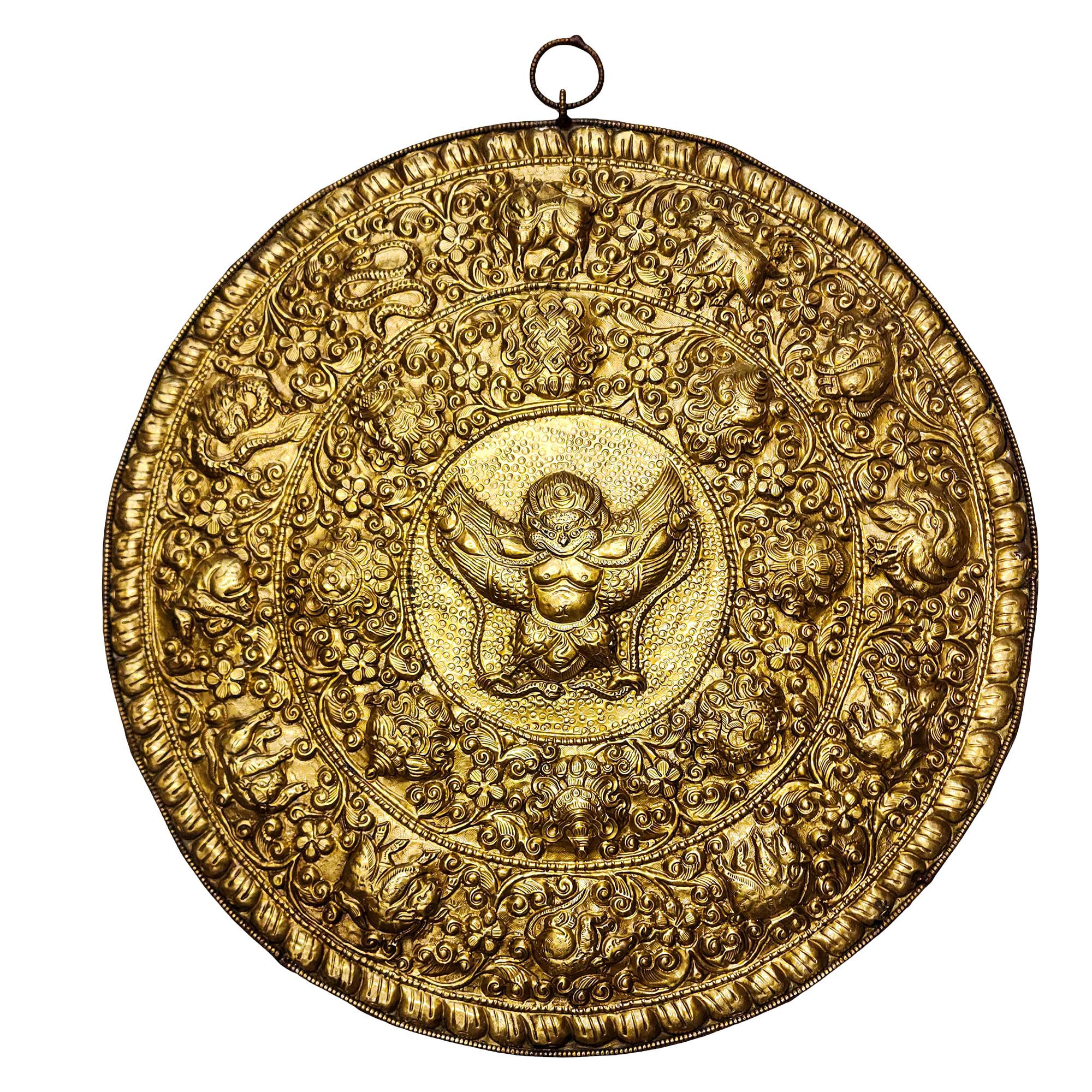Metal Wall Hangings
Tibetan Buddhist culture is rich in symbolism and art, and metal or wooden wall hangings are essential to this tradition. These wall hangings, also known as paubhas, are typically made in painting form, painted on a cotton canvas with natural color. they are also made in wood, brass, or clay, and feature intricate designs and vibrant colors. They depict various aspects of Buddhism, such as deities, Buddhist teachings, and spiritual stories. Many of these wall hangings are adorned with semi-precious stones, such as turquoise, coral, and lapis lazuli, which add to their beauty and symbolic significance.
Read More
The art of creating these metal or wooden wall hangings is considered a sacred tradition in Tibetan Buddhist culture, and it is often passed down from generation to generation. The creation process can take many months or even years, as each detail is carefully crafted and the colors are meticulously applied. These wall hangings are considered to be sacred objects and are used for meditation, worship, and offerings.
One of the most common themes depicted in Tibetan wall hangings is the mandala, a geometric representation of the universe. Mandalas are often intricate, symmetrical designs that are meant to represent the balance and harmony of the universe. They can also depict important Buddhist teachings and spiritual stories, and they serve as a focus for meditation and spiritual contemplation. Other popular themes in Tibetan wall hangings include Buddhist deities such as the Buddha, bodhisattvas, and protectors, as well as important Buddhist symbols like the lotus flower, the wheel of life, and the eight auspicious symbols.
The use of color in Tibetan wall hangings is also significant, as each color is associated with a specific emotion, quality, or spiritual aspect. For example, gold is associated with wisdom and compassion, red symbolizes passion and power, and blue represents serenity and peace. The use of semi-precious stones in these wall hangings is also significant, as each stone is believed to have spiritual properties and can bring positive energy to the environment.
In conclusion, Tibetan metal or wooden wall hangings are a rich and important part of Tibetan Buddhist culture. They serve as sacred objects for meditation, worship, and offerings, and their intricate designs, vibrant colors, and semi-precious stone settings make them both beautiful and significant. These wall hangings are a testament to the beauty and significance of Tibetan Buddhist culture and continue to be valued and revered to this day.
Garuda : Brief Introduction
The Garuda is a giant mythical bird or bird-like creature in Hindu and Buddhist mythology.
Garuda is the name for the constellation Aquila and the Brahminy kite is considered to be the contemporary representation of Garuda. In Buddhist mythology, the Garuda are enormous predatory birds with intelligence and social organization. Another name for the Garuda is supara meaning "well-winged, having good wings". Like the naga, they combine the characteristics of animals and divine beings and may be considered among the lowest devas.
Iconography
There were also the four garuda-kings : Great-Power-Virtue Garuda-King, Great-Body Garuda-King, Great-Fulfillment Garuda-King, and Free-At-Will Garuda-King, each accompanied by hundreds of thousands of attendants.
The Garudas have kings and cities, and at least some of them have the magical power of changing into human form when they wish to have dealings with people. On some occasions Garuda kings have had romances with human women in this form. Their dwellings are in groves of the simbalī, or silk-cotton tree.
The Garuda are enemies to the nāga, a race of intelligent serpent- or dragon-like beings, whom they hunt. The Garudas at one time caught the nāgas by seizing them by their heads; but the nāgas learned that by swallowing large stones, they could make themselves too heavy to be carried by the Garudas, wearing them out and killing them from exhaustion. This secret was divulged to one of the Garudas by the ascetic Karambiya, who taught him how to seize a nāga by the tail and force him to vomit up his stone.
The exact size of the is uncertain, but its wings are said to have a span of many miles. This may be a poetic exaggeration, but it is also said that when a Garuda's wings flap, they create hurricane-like winds that darken the sky and blow down houses. A human being is so small compared to a Garuda that a man can hide in the plumage of one without being noticed. They are also capable of tearing up entire banyan trees from their roots and carrying them off.
Garudas are the great golden-winged Peng birds. They also have the ability to grow large or small, and to appear and disappear at will. Their wingspan is 330 yojanas (one yojana being 40 miles long). With one flap of its wings, a Peng bird dries up the waters of the sea so that it can gobble up all the exposed dragons. With another flap of its wings, it can level the mountains by moving them into the ocean.
Read More
